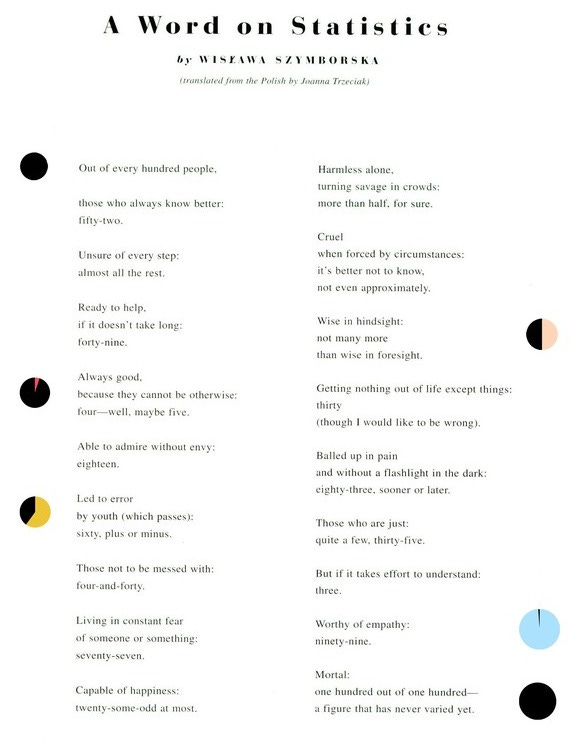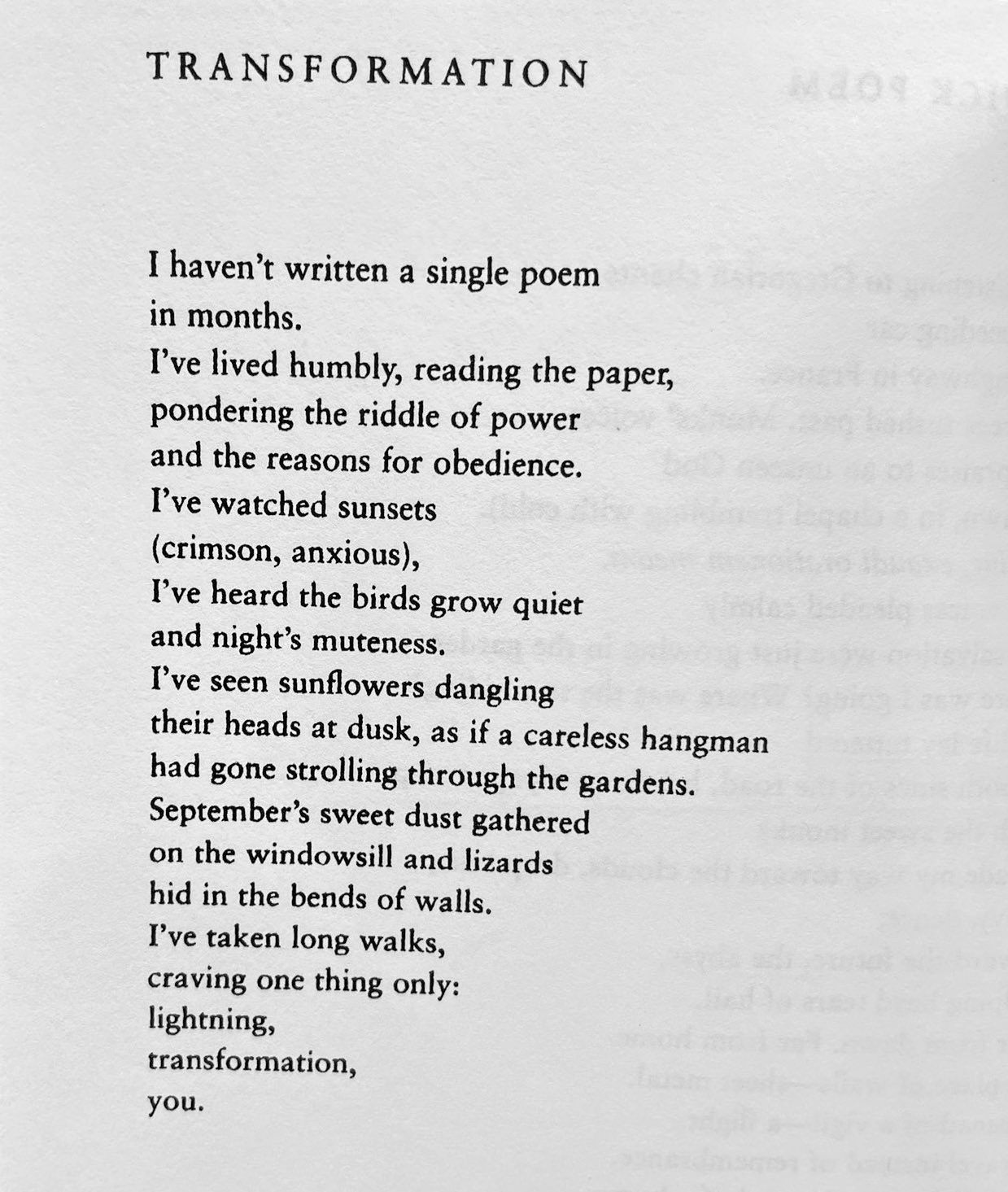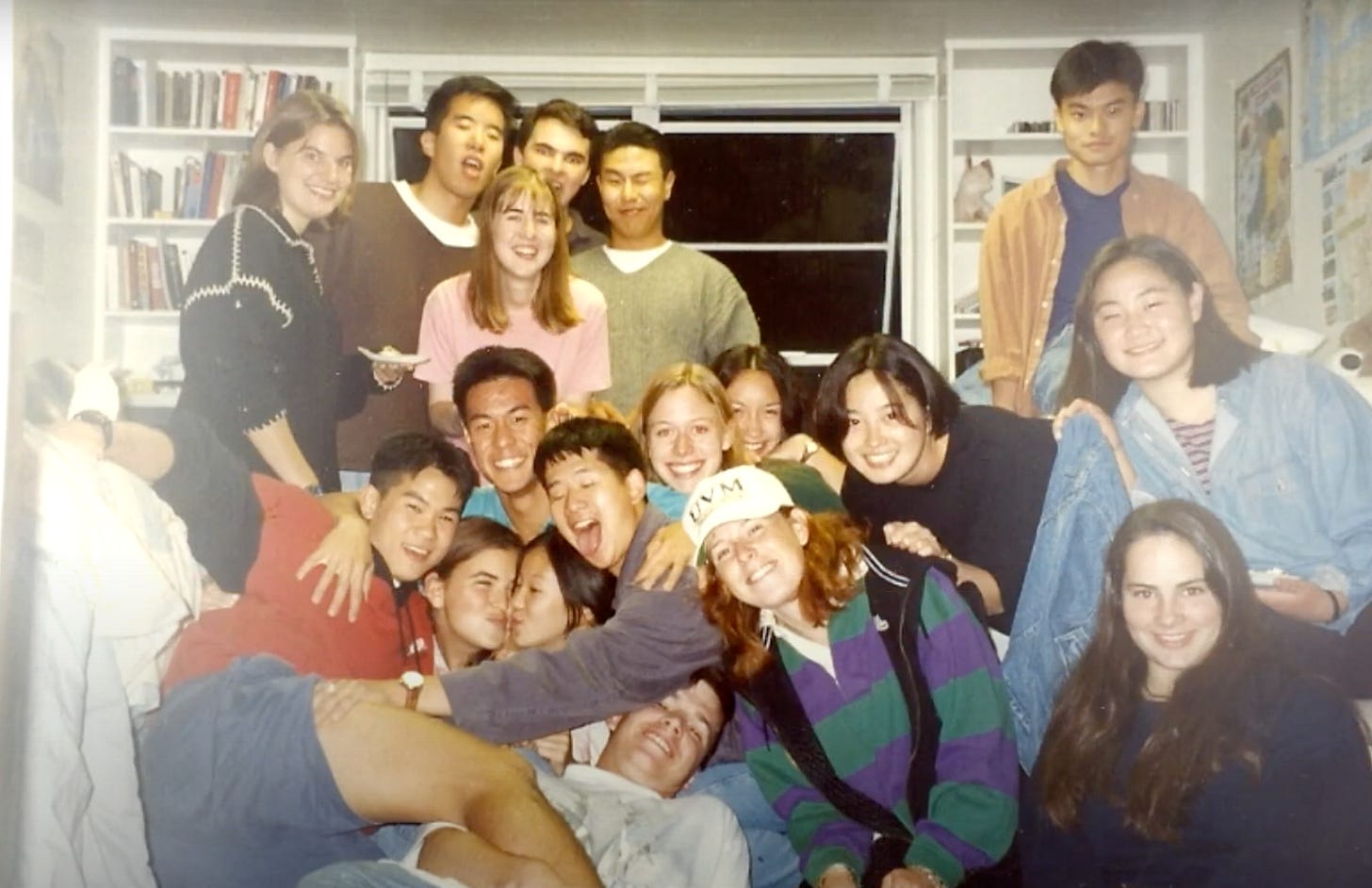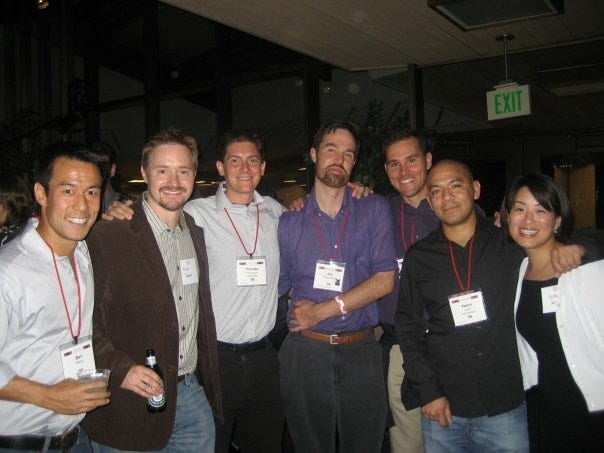#35 - Notes on Chemical Engineering
post-election. stanford HS interviews. chemical engineering and applying it to human action. Dimensionless numbers and the Emig number. A note about Arcane and League.
- Wisława Szymborska, featured in the Atlantic, (translated. by Joanna Trzeciak)1
Well the whole election and subsequent week didn’t go well for me. I find little urge to recap the monumental gravity I have felt and feel, other than to say that I am resolutely grateful for the friends who attended to me at lunches on Thursday and Friday following, shared poetry readings at
, consolations from across the globe (here, Germany, Switzerland), measured and wondered conversations with two favorite friends and entrepreneurs, a fiftieth birthday celebration, an ultimate game, and a toast to a more hopeful, verdant future. Safe Schools for Menlo Park (Measure U), a local bond proposal that I worked on with the inimitable Katherine Bicer and a host of other amazing volunteers, passed overwhelmingly to fund climate, earthquake and safety resilience for our local schools.These events and relations are the quotidian reminders of the mundane heroism that buffer us from slipping into a cynical catastrophe of loneliness and inaction. Gathering is undoubtedly a salve abjuring us from the reactive instinct to turn inward, as Julie Beck of the Atlantic champions. We must inch forward through the laborious and entrenched individualism of self-interest and self-centeredness. Perhaps it is best analogized by, again, Shostakovich’s three B-flats, this time from his 5th symphony: the first of triumph, the second of penitent yearning, the third a resignation only to be followed by the enduring timpanic march insisting that we go forward.
Revisiting Memories of University Life
So act we must. And I am especially reminded of it when Autumn wrinkles the serotinal days. With the igniting trees bursting into robust reds, comes college application time for high school seniors. Over the past few years I’ve participated in a program called Stanford OVAL where alumni and high school seniors, interested in the Farm, can connect with one another. The goal is two-fold2: to provide high school students with a personal account of what life at Stanford is like and to enable an alum to give a more textured evaluation of a potential matriculant to the admissions office.
I have thoroughly enjoyed this work, getting the chance to receive dozens of stories of amazing young adults and learn of their varied interests. My children even know that I have had favorite interviews: M, from Oakland, for example, exhibited an advanced maturity and the kind of uncontainable curiosity for philosophy that condenses into late night, stale pizza fueled, dorm hallway discussions of the human condition.
But I have also seen a frequent anxiousness that bubbles beneath their grades, test scores and extracurriculars; the pressure of achievement, soaring expectations and an outlook of educational scarcity and intellectual shackling. I feel that it is my brief and humble job to reassure them that the stochastic and peripatetic nature of their lives ahead hold mystery and possibility. I want to encourage them towards their own courageous acts of self determination.
Last Friday I met with, well, I’m going to call her Vi, in honor of the protagonist from Netflix and Riot Games’ Arcane Series.3

She was a local bay area kid, daughter of immigrants, who discovered a passion for the oboe in eighth grade. We talked about her upcoming performances of Tchaikovsky’s fourth (which brought back memories of Glenda Tistaert’s gorgeous oboe solo) and how she hoped and had yet to play Dvorak’s New World Symphony on the English horn4. She asked about life both on campus and post-college years, about how my time at Stanford affected my choices and life.
In answering her questions, diffuse memories evoked dorm life with CP, Snitch, Foley, Gusta and ADJ, the Game, shooting stick and midnight Frisbee Golf. Kim and her dear friends Mina and Jen, all Arroyans, were in my thoughts. I also retold stories of working on problem sets over the weekend with my chemical engineering friends, set to the soundtrack of U2’s Sunday Bloody Sunday (and occasionally with Bud Light).
I reflected about the role that chemical engineering has played in my life. Chemical engineering has given me certain tools, such as thermodynamics, transport phenomenon, fluid mechanics, reaction dynamics and such, which have enabled my career to span varied fields including drug development, materials science, clean tech and micro/nano fabrication. It’s a curriculum that allows us to address a wide breadth of problems, especially as entrepreneurs. My friend, Joel, summarizes it best, in a decade old copy of our department newsletter, MIT Xcurrents:
Moxley credits MIT chemical engineering because it touches every industry and builds a quantitative toolbox that is immediately applicable to business strategy, operations and finance. “For an entrepreneur, chemical engineering is the ultimate major,” he says. “It makes you dangerous on so many different fronts.”
Chemical Engineering (ChemE) to reframe the world
Joel is not alone amongst ChemEs; we tend towards exuberance when it comes to our field. And while I too am grateful for having a training in ChemE, I cherish even more the certain underlying principles of the discipline that have sculpted the way I view the world.
There are some who believe that reducing the world to mathematical abstractions can deprive it of its inherent beauty, elegance and enigma. I have found that the world seems richer and more beautiful for having viewed it through varied diffracted lenses. The world cannot be explained with science, literature, art, faith or psychology alone. Indeed life resists stasis, creatively evolving and emerging anew.
ChemE borrows many concepts from physics, which naturally are used as simple models to interpret the world. We’ve seen this before using the Lennard Jones Potential, a description of colloidal physics, to represent interpersonal relationships. Other concepts include phase changes, like a liquid to solid transition, which can be used to describe not just the freezing of water, but the formation of a traffic jam during the morning commute or the behavior of participants in a mosh pit.
As I process the implications of our election and global discontent, one of these concepts is top of mind.
Dimensionless numbers
One of the fundamental tools of ChemE is called non-dimensionalization. It’s the process of manipulating physics equations to cancel out units and condense an understanding of the underlying phenomenon. This process typically reveals unit-less, or dimensionless, numbers that characterize the behavior of a system, often in a scale invariant manner, or insensitive to its physical extent or expanse. The most common dimensionless number in ChemE might be the Reynolds number:
The Reynolds number compares inertial forces with viscous (dissipative) forces in a fluid flow, which can be summarized by density, viscosity, velocity and a flow length scale (i.e. diameter of a tube). When the number is very big, inertia dominates and fluids behave turbulently, like roiling large ocean waves, where nothing is predictable. When the number is small, viscosity reigns, smoothing perturbations with serenity, no more than the tiny ripple of a small pebble plopped into a calm lake, where in theory, and sometimes in practice, the movements are reversible.
There are other scale invariant numbers; Peclet, Ohnesorger, Capillary numbers, all comparing competing effects that are at play in a system. A scale invariant fluid system with a large viscosity may still have a low Re even if the velocity might be high. The same number can applied whether you analyze atmospheric gulf streams or the flagella of a swimming single celled organism. This idea that whether we are small or large, old or young, and that the same underlying physics holds is sublime and profound; cells work together to form organs, organs collaborate to form individuals and individuals interact to form societies and so forth. These connective threads across scales connect us to all the substances and life matter that make up our universe.
But how does this framework impact our lives in ways beyond technical analysis? I am aware the following might feel apophenic, or merely metaphorical, but here we go.
How large or small is your Human Action (Emig) number?
Emig and I were discussing human action and I am generally irked by the reductive assumption that humans act in self-interested ways, the rational driving force of the behavior of homo economicus. While it is unassailably true that we all behave in our self-interest, we are not merely agents of self-interest. And the term, self-interest, itself feels too constrained, too shallow to capture the depth of human action.
Emig proceeded to borrow a trick from non-dimensionalization to invert the term from self-interested to interested-self. Accordingly:
This was an epiphanous moment5; to relate and compare the forces of self interest and interested selves, we now have a fuller picture of human action. In one limit, human action is directed internally, in another it speaks of curiosity. One drives accumulation, the obverse, otherwardness.
The inversion of the words fundamentally changes the frame with which we perceive and understand the world. This is actually a common literary device,6 called an antimetabole, one of the most famous, being: “Ask not what your country can do for you, but what you can do for your country.” But viewing this from the perspective of non-dimensionalization, to me, yields new richness. Self-centered becomes a centered-self. Would you rather receive tough love or love the tough?
What will your Human Action number be? Better yet, what will your Emig number be? How about one?
Fuzzy or Techie
At Stanford there was shorthand taxonomy for your educational focus. Fuzzy meant you studied English, Comp Lit or History; Techie was reserved for engineers or scientists. Some fields like human biology straddled the distinctions and, of course, there were those dual majors who would have one foot camped in both arenas.
But this is an unconsidered and false choice. Most of our lived experiences exist at the thresholds, rarely whole, when constrained to artificially defined interests or skills. In Wislawa Syzmborska’s poem above, she is able to manipulate concrete numbers into open-ended musings on the immensity of human questions possibly never answered; techie begetting fuzzy, vice versa. Chris had done the same.
I’ve been grateful for my training in the technical and in the arts; this will become more important going forward in life. And for the young; whether it’s the story of Vi, in Arcane, who slips between the order of Piltover and chaos of Zaun, or Vi applying to Stanford, her orbiting loves of music, history, literature and law, let us all immerse in the frontiers of our being, whole, courageous and ultimately interested selves.
There is an incredible tension that exists in this title: an apical, amorphousness of “word” contrasted with the plural, precision of “statistics.” But oh wow, what punch this poem has!
A third goal is probably to boost alum engagement, leading to a greater feeling of connection and then donations back to the school.
My daughters and I have clutchingly awaited its second and final season, both for its narrative force but because we love playing League, albeit poorly. We streamed the 2024 LoL Worlds finals from London which ended with incredible suspense.
Vi did play with Gustavo Dudamel, and so thus including his conducting here.
There is a gorgeous quote from Tyler Harper’s article in the Atlantic on Richard Price’s new novel regarding epiphanies: “If Price’s novel has a message, it is that epiphanies are a kind of theater we perform for ourselves.”
This caused me to go down quite the rabbit hole around other devices including hypallage and anastrophe.








I love Szymborska—made pilgrimage to her grave in Kraków.
Thanks for the eclection.
I think we need the structure of the techie to help us find a purpose in the fuzzy. Otherwise we can feel lost and aimless, with no sense of direction for our purpose.